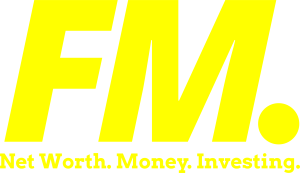When you're self-employed, you're used to doing it all—running your business, managing finances, and setting your own goals. But one area many freelancers and entrepreneurs struggle with is retirement planning. Without the safety net of an employer-sponsored plan or matching contributions, planning for the future can feel overwhelming.
While the SEP IRA (Simplified Employee Pension) is a common choice for the self-employed, it's not the only option. In fact, there are several flexible, affordable strategies that can help you build reliable retirement income, even without a traditional 9-to-5. Here's how to take control of your financial future and create a plan that works on your terms.
Why Retirement Planning Is Crucial for the Self-Employed
When you work for yourself, the responsibility of retirement planning falls squarely on your shoulders. There’s no HR department to walk you through your options. No company match to boost your contributions. And often, variable income makes it hard to commit to a savings schedule.
Still, that doesn’t make retirement any less important. In fact, it makes it more urgent. Without a plan, you could end up working far longer than you'd like—or risk running out of money in your later years. The good news? With the right tools and mindset, you can build a strong retirement plan that offers both flexibility and security.
The SEP IRA is a great starting point for many self-employed individuals. It allows contributions up to 25% of your income (or $69,000 in 2024, whichever is less), and contributions are tax-deductible. But it's not the only route, and may not be the best for everyone.
Here are other strong options to consider:
Solo 401(k): More Control, Higher Limits
Also known as an Individual 401(k), this option is ideal for self-employed people with no employees. It allows you to contribute both as an employer and an employee—significantly increasing your contribution limits.
- Employee contribution: Up to $23,000 (or $30,500 if you're over 50)
- Employer contribution: Up to 25% of your net self-employment income
- Total max contribution: $69,000 for 2024
Solo 401(k)s also allow Roth contributions, giving you a tax-free income stream in retirement. That’s something SEP IRAs don’t offer.
Roth IRA: Tax-Free Growth and Withdrawals
If your income falls within the eligibility limits, a Roth IRA is one of the most powerful retirement tools out there. You contribute post-tax dollars, and your money grows tax-free. Even better? Withdrawals in retirement are also tax-free.
- Contribution limit: $7,000 for 2024 (or $8,000 if over 50)
- Income limits: Phase-out begins at $146,000 for individuals ($230,000 for couples filing jointly)
Even if you make too much to contribute directly, a “backdoor Roth IRA” strategy may allow you to take advantage of its benefits.
SIMPLE IRA: A Middle-Ground Option
SIMPLE stands for “Savings Incentive Match Plan for Employees,” but it’s also a viable option for solo entrepreneurs. It’s easier to administer than a 401(k), though it comes with lower contribution limits.
- Employee contribution: Up to $16,000 (or $19,500 if over 50)
- Employer match: Either 2% fixed contribution or 3% match
If you plan to grow your business and hire employees soon, a SIMPLE IRA can be a stepping stone toward a larger retirement program.
Personal Pension Plans: Lifelong Income Without the Complexity
One option growing in popularity is the personal pension, a self-funded plan designed to create guaranteed income for life. Unlike traditional investment accounts that depend on market performance, personal pensions offer stability and predictability.
This type of retirement solution may not get the same attention as a 401(k) or IRA, but for self-employed individuals who want to turn their savings into reliable monthly income, it's a powerful option, especially if you're worried about outliving your money.
Tips for Self-Employed Retirement Success
No matter which plan you choose, here are a few key practices to stay on track:
- Automate contributions: Set up recurring transfers from your business account to your retirement plan. Even small, consistent contributions add up over time.
- Separate business and personal finances: This makes it easier to manage retirement planning and track contributions.
- Review annually: Your income and tax situation can change, so revisit your plan regularly to make sure it still fits your goals.
You Don’t Need an Employer to Build a Secure Future
Retirement planning when you're self-employed may take more effort, but the freedom and control it offers are well worth it. Whether you’re drawn to a Solo 401(k), a Roth IRA, or a modern personal pension, there are more options than ever to help you create dependable income for the future, on your terms.










